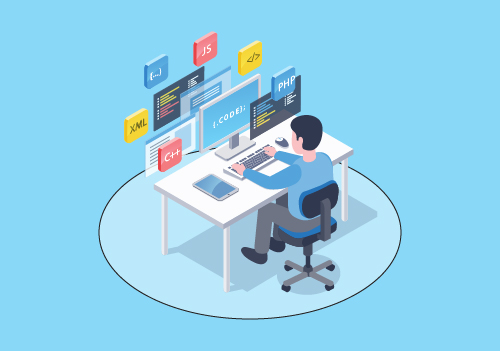How to Achieve Maximum Speed, Durability, and Security for Software Development
In today’s highly competitive environment, developing software quickly without sacrificing quality or security is critical. The ability to deploy software quickly and reliably is a significant competitive advantage.
At the same time, software development must be durable and able to withstand the rigors of continuous updates and enhancements. Clean code, testing, and proper documentation are critical to ensuring durability.
In addition, security is a must in any software development environment. Cyberattacks and data breaches are costly and damaging to businesses and customers. Having proper security measures throughout development is critical to ensure that software is secure and compliant within industry regulations.
The following lists tips and strategies for optimizing code, utilizing automation tools, implementing testing strategies, and maintaining security compliance. Following these basic guidelines can give you a competitive advantage in the marketplace.
Maximizing Speed in Software Development
Agile methodologies and continuous integration/continuous delivery (CI/CD) are critical components in achieving maximum speed in software development. Here are some tips to help you optimize code and utilize automation tools to increase speed
1. Optimize Code: Writing clean, efficient, and reusable code is essential. Code optimization helps to reduce the size and complexity of your codebase, making it easier to maintain and improve. Some tips for optimizing code include:
– Using algorithms and data structures that are appropriate for your domain
– Minimizing the number of function calls and database queries
– Removing unnecessary code and comments
– Following coding standards and best practices
2. Utilize Automation Tools: Automation tools can help to speed up software development by reducing the amount of manual work required. Here are some examples of automation tools that can help you save time:
– Continuous Integration/Continuous Delivery (CI/CD) tools: CI/CD tools automate the building, testing, and deployment of software, allowing developers to focus on writing code.
– Code Review Tools: Code review tools automate the process of reviewing code, saving developers time and ensuring that code meets coding standards and best practices.
– Test Automation Tools: Test automation tools can help to reduce the time required for testing, allowing developers to identify and fix issues quickly.
3. Collaborate and Communicate: Collaboration and communication between team members are crucial for achieving maximum speed in software development. Here are some tips for effective collaboration and communication:
– Hold regular meetings to discuss project status and updates
– Use project management tools to track progress and assign tasks
– Encourage team members to share their knowledge and expertise
– Foster a culture of continuous improvement and learning.
Ensuring Durability in Software Development
Ensuring durability in software development is essential to create software that can withstand the test of time. Clean code, testing, and proper documentation are critical to ensuring durability. Here are some tips for implementing durability in software development:
1. Maintain Clean Code: Clean code is easy to read, understand, and maintain. Writing clean code makes adding new features and fixing bugs easier, reducing the risk of introducing errors and decreasing the time required for maintenance. Some tips for maintaining clean code include:
– Following coding standards and best practices
– Writing code that is modular and reusable
– Using descriptive variable and function names
– Documenting code using comments and code documentation tools.
2. Implement Testing Strategies: Testing is a crucial aspect of software development, allowing developers to catch errors and bugs before they become significant problems. Implementing testing strategies can help to ensure that software is durable and reliable. Some tips for implementing testing strategies include:
– Writing unit tests to test individual functions and modules
– Implementing integration testing to test the interaction between different modules
– Performing regression testing to ensure that changes do not introduce new errors
– Using testing tools to automate testing and reduce the time required for testing
3. Maintain Documentation and Backups: Documentation and backups are crucial for ensuring that software is durable and can withstand the test of time. Proper documentation allows developers to understand the codebase and make changes without introducing errors. Backups ensure that data is recovered in case of a disaster. Some tips for maintaining documentation and backups include:
– Writing clear documentation for code and processes
– Storing documentation and backups in a secure and accessible location
– Implementing version control systems to manage changes and revisions.
 Achieving Maximum Security in Software Development
Achieving Maximum Security in Software Development
Protecting against cyberattacks and data breaches is critical. Here are four tips for implementing security measures throughout the development process:
1. Follow Security Best Practices: Following security best practices is essential to ensure that software is secure and compliant with industry regulations. Some security best practices include:
– Implementing secure coding practices to prevent common vulnerabilities such as SQL injection and cross-site scripting (XSS)
– Using encryption to protect sensitive data in transit and at rest
– Implementing multi-factor authentication to secure user accounts
– Regularly updating software and systems to patch security vulnerabilities.
2. Conduct Regular Security Audits: Regular security audits are essential to identify and fix security vulnerabilities before attackers exploit them. Some tips for conducting regular security audits include:
– Conducting code reviews to identify security vulnerabilities
– Performing penetration testing to identify vulnerabilities in the software and systems
– Implementing intrusion detection and prevention systems to detect and prevent attacks.
3. Train Employees on Security Awareness: Employees are often the weakest link in the security chain, so training them on security awareness is crucial. Some tips for training employees on security awareness include:
– Providing security awareness training regularly
– Encouraging employees to report suspicious activity
– Implementing policies and procedures to govern employee behavior and access to sensitive data.
4. Implement a Disaster Recovery Plan: In case of a disaster such as a cyberattack or natural disaster, it’s essential to have a disaster recovery plan in place. Some tips for implementing a disaster recovery plan include:
– Creating backups of critical data and systems
– Developing a plan to recover systems and data in case of a disaster
– Testing the disaster recovery plan regularly to ensure it is effective.
Final Words
Protected Harbor can help you achieve speed, durability, and security for your software development to ensure that your software can withstand the test of time and protect against cyberattacks and data breaches by providing a safe environment. With our secure infrastructure and experienced team, we can help you implement best practices ensuring that your software is developed to the highest standards.
Contact Protected Harbor today if you’re looking for a reliable and secure environment. Contact us today for a consultation and a free IT Audit, and see how we can help you achieve your goals faster.






